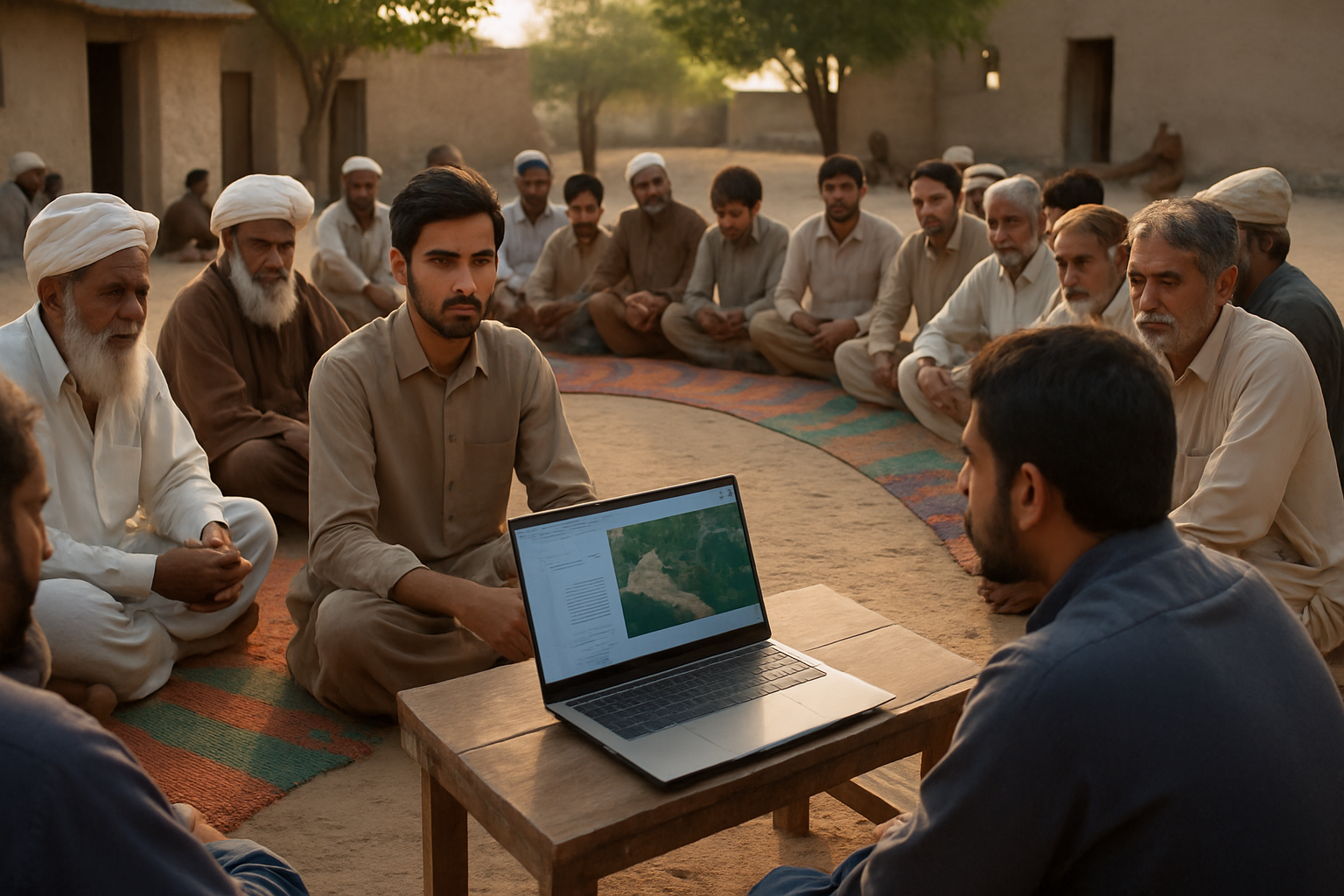In a remote region of Balochistan, Pakistan, a long standing land dispute was recently settled in an unexpected way not by force, courts, or traditional elders alone, but with the help of artificial intelligence. This groundbreaking event has drawn national and international attention for introducing AI-assisted tribal dispute resolution into one of the country’s most traditional systems.
For over two years, two tribes in Khuzdar, Balochistan, were locked in a bitter argument over ownership of a piece of land. Local jirgas traditional tribal councils attempted several times to mediate, but each effort ended without resolution. Distrust, old grudges, and unclear historical records made the issue nearly impossible to resolve.
As one elder from the area shared, We had tried everything, but no one was willing to back down. The land belonged to both, and neither. That’s when the younger generation stepped in with a bold idea what if AI could help?
Bringing Technology to Tribal Talks
The youth from both tribes collected every available piece of data: satellite images from Google Maps, old hand drawn boundary sketches, local testimonies, and historical records. They then entered all this information into ChatGPT, a popular AI model, asking it to analyze the situation from a neutral, evidence based perspective.
What came back surprised everyone: a detailed explanation of each tribe’s claim, a suggested boundary division, and historical context to support it all explained in simple, unbiased language. This proposal, created through AI-assisted tribal dispute resolution, was then presented to both tribes.
At first, there was hesitation. How could a machine understand tribal traditions, emotions, or unwritten history? But what made the AI’s suggestion effective was its neutral tone and logical reasoning. The AI didn’t try to “judge” the tribes. Instead, it offered a possible solution based on facts, fairness, and respect for both sides.
Elders found that it aligned closely with their own values of justice just without the human bias. One tribal elder said, It was like listening to a third party who had no stake, no emotions, just the truth. The AI’s suggestion was accepted by both sides a result that no previous jirga had been able to achieve.
Expert Insights on the Case
Legal and technology experts across Pakistan have weighed in on the situation. Dr. Fawad Ali, a legal scholar from Quetta University, remarked. This is the first time we’ve seen AI-assisted tribal dispute resolution being used in such a sensitive and complex case. While AI cannot replace human wisdom, it can assist in removing bias, organizing facts, and offering peaceful paths forward.
Experts agree that while the AI doesn’t know cultural emotions, it excels in logic, neutrality, and structure traits often lacking in heated disputes. Across the world, AI is being tested in legal mediation. In the Netherlands, courts use AI to suggest settlements in minor disputes. In China, digital courts use AI assistants to help judges review cases faster.
The Balochistan case may be the first of its kind in Pakistan, but it reflects a global trend, using technology to improve access to justice. In contrast to other regions where tribal disputes often turn violent, this peaceful outcome shows that AI, when used wisely, can support not replace traditional systems.
Personal Stories from the Ground
Rashid, a 22 year old local student, helped set up the AI inputs. He shared, We didn’t trust the courts. But we also didn’t want to fight. Using ChatGPT gave us a third option that no one expected, but everyone respected. For many young people in the region, this event gave them hope that tradition and technology can work together to create a better future.
This case teaches us that AI-assisted tribal dispute resolution is not about replacing human judgment. It’s about supporting it.
Here’s what made it work:
Neutrality: The AI had no personal stake.
Data based reasoning: It used facts, not feelings.
Cultural respect: It didn’t insult tribal customs; it supported them with structure.
Youth involvement: The younger generation played a bridge role between tech and tradition.
Pakistan’s legal and tribal systems can both benefit from this hybrid model, especially in remote areas where courts are far away, and trust in formal systems is low.
Following the success of this case, some tribal leaders are now considering using AI tools in future land or property disputes. However, experts caution that AI must always be used under human supervision and should never be the final authority.
Still, the success of this AI-assisted tribal dispute resolution offers a roadmap for communities seeking peaceful, efficient, and fair conflict resolution in the modern age.
In a world often divided between tradition and innovation, this case from Balochistan proves they don’t have to clash. Instead, they can collaborate. When human values guide technology, and technology supports fairness, even the most difficult disputes can find resolution. This story is more than just about land it’s about hope, change, and the future of justice.


Design tools like Lovart are game-changers for balancing creativity and efficiency-especially when AI helps automate repetitive tasks without losing the human touch.